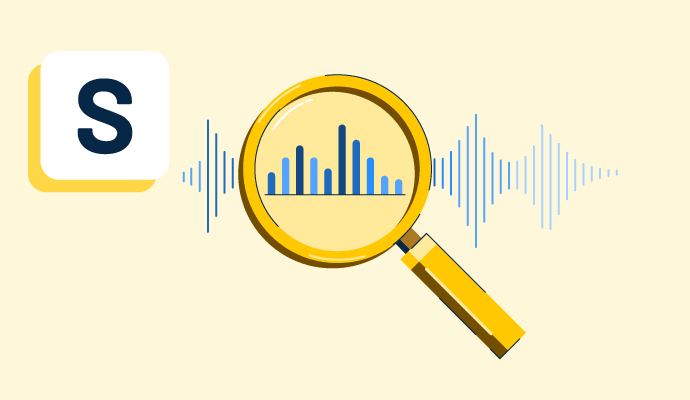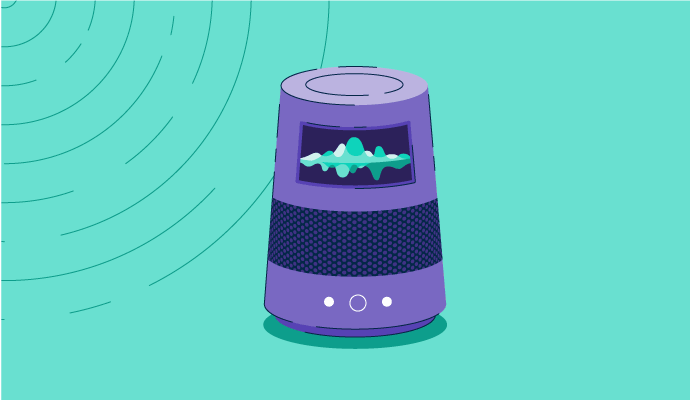What is speech analytics?
Speech analytics is the process of analyzing audio for relevant business information using artificial intelligence (AI).
In most cases, speech analytics is applied to customer calls to a business. Speech analytics software assesses the audio to look for trigger words and phrases that indicate sentiment or emotions from the customer.
Speech analytics doesn’t just look at words that customers are saying. In more advanced software, the tone and delivery of conversations can be analyzed to provide insight into unspoken thoughts or feelings.
Types of speech analytics
Depending on how a business wants to use the information gathered in customer calls, speech analytics can be one of two types:
- Real-time analytics. This type of speech analysis is conducted while business representatives are on calls with customers. The live data gathering means that actions can be taken immediately while the business still has the customer on the call.
- Post-call analytics. The alternative to real-time speech analytics is post-call analysis. Recordings of customer calls are passed through speech analysis tools, where insights are extracted based on trigger words.
Basic elements of speech analytics
Regardless of the type of speech analysis conducted, the basic elements of running a successful analysis include:
- Data processing. The first step in speech analytics is gathering the information to be assessed. Using automatic speech recognition (ASR), natural language processing (NLP), and transcription, speech analytics tools can process and extract valuable insights from the input audio.
- Data analysis. Once the software has run, teams can review and analyze the discovered information. In some cases, an additional step of processing may happen before analysis to remove sensitive personally identifiable information (PII).
- Insight sharing. Once the analysis has taken place, the team can share their findings. The outcomes of speech analytics are typically measured against set goals like key performance indicators (KPIs) to ensure customer satisfaction goals are met and whether any dissatisfaction needs to be addressed.
Benefits of speech analytics
There are a number of benefits that businesses experience when using speech analytics tools. These include:
- Increased customer satisfaction. Particularly when reviewed in real time, speech analytics data can give customer support teams crucial information that can be used on calls to improve the customer’s experience. Even when using post-call data, though, customer service employees can be trained using real calls and be better prepared to answer questions that may come up in the future.
- Improved employee performance. Knowing what signals to look for on calls can give customer support employees the confidence to address issues on future customer calls. Speech analytics can also help identify frequently asked questions, which means teams can be briefed and prepped for these once they’ve been recognized.
- Greater operational efficiency. Information gathered from speech analytics tools can provide valuable insights for marketing, sales, and product development teams. Knowing where teams are falling short in helping customers or particular areas that customers are struggling with can lead to additional team training and streamlining processes to improve the customer experience.
Best practices for speech analytics
When implementing speech analytics software for the first time, businesses should follow several best practices to get the most helpful data from customer calls. These can include:
- Monitoring every call for insights. The more information a business can gather about its real customers, the more influential the action taken after calls will be. Data-driven insights can significantly impact the company’s bottom line, so all calls should be monitored using speech analytics software if possible.
- Setting trigger words or phrases ahead of time. When rolling out a new speech analytics tool, it’s best to program the software with select words and phrases that you already know customers might use to indicate both positive and negative sentiments. This helps identify recurring pain points for customers to establish new protocols for dealing with issues.
- Recognizing staff for positive experiences. While it’s important to deal with any negative interaction a customer may have with the business, it’s also good practice to acknowledge and reward staff who create positive experiences for customers. This shouldn’t be limited to making a sale, either. Any helpful interaction a customer has could lead to a future sale or improved retention, so these efforts should also be rewarded.
- Creating a system for compliance. Maintaining privacy and security around sensitive customer information is just as crucial on calls as at a point of sale or in any other medium. When setting up speech analytics software, ensure relevant compliance checks have been made. In some cases, AI can automatically redact certain types of information before call data is provided to the team.
Create more positive and insightful experiences for your customers when they call your company using contact center software.

Holly Landis
Holly Landis is a freelance writer for G2. She also specializes in being a digital marketing consultant, focusing in on-page SEO, copy, and content writing. She works with SMEs and creative businesses that want to be more intentional with their digital strategies and grow organically on channels they own. As a Brit now living in the USA, you'll usually find her drinking copious amounts of tea in her cherished Anne Boleyn mug while watching endless reruns of Parks and Rec.

